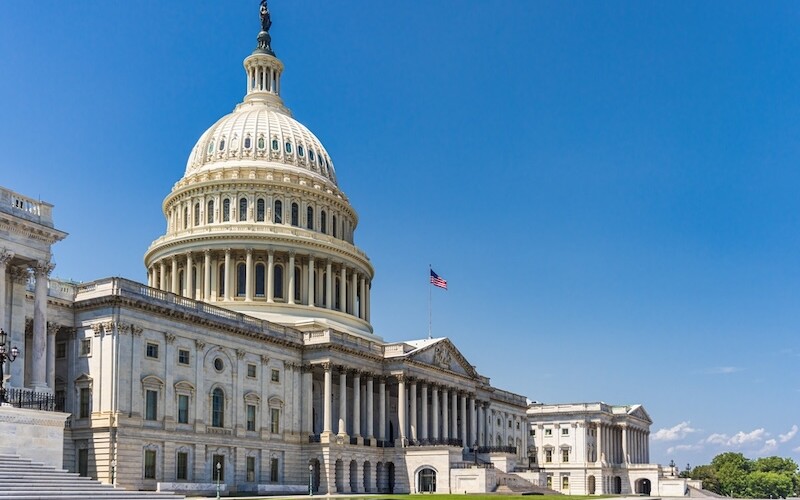With an eye toward the growing global power of China, Congress has crafted a new National Maritime Strategy that among other things recommends continued modernization of the inland waterways system, expansion of mariner training programs and investments in U.S. shipyards.
The report, prepared by a bipartisan group of four lawmakers, Rep. Mike Waltz, R-Fla., Rep. John Garamendi, D-Calif., and Senators Mark Kelly, D-Ari., and Marco Rubio, R-Fla., sounds an SOS that America is lagging dangerously behind China in the maritime domain, which they say poses serious threats to economic growth, international trade, and national security.
The damage has been largely self-inflicted.
“Decades of neglect by the U.S. government and private industry has weakened our shipbuilding capacity and maritime workforce, contributing to a declining U.S-flag shipping fleet to bring American goods to market and support the U.S. military during wartime,” the report states.
The lawmakers have crafted a far-reaching plan to revitalize the American maritime industry with the aim of putting it on competitive footing with China, which has become a maritime powerhouse.
“The competition between the U.S. and Communist China will define the 21st century and nowhere is this conflict more prevalent than in the maritime domain,” Sen. Rubio said. “The U.S. must move quickly to revitalize our maritime industrial base, reinvest in a robust workforce and advance innovative technologies to project strength and security in the world’s waterways, oceans and seas.”
The report says that while the number of U.S. flag oceangoing vessels has declined to less than 200, the Chinese have built up a fleet of more than 7,000 such vessels. There are 153,000 workers in the U.S. shipbuilding industry, while China employs more than 600,000, and while the U.S. struggles to keep about 12,000 mariners working in the industry, the Chinese have more than 1.7 million seafarers.
China, the lawmakers add, now possesses 230 times more commercial shipbuilding capacity than the U.S.
“American shipyards and mariners are ready, willing and able to do the job but can no longer be expected to compete against heavily subsidized foreign competitors in mainland China and elsewhere,” said Rep. John Garamendi, D-Calif. “Our National Maritime Strategy should start with three key words: the Jones Act.”
“Reversing the Decline of America’s Maritime Power” outlines a long-term national maritime plan that focuses on strategies, goals and actions to rebuild the U.S. maritime domain.
Among the highlights
• Establish multi-year funding authorizations of critical maritime programs.
• Create new programs that offer tax incentives, enhanced cargo preference, operational subsidization and federal financing to encourage companies to ship products on U.S.-flag ships.
• Fully fund the Maritime Administration, the Coast Guard, Federal Maritime Commission and other federal agencies that protect, regulate and support the maritime industry. Launch a national marketing campaign and promote the domestic maritime workforce, especially the U.S. Merchant Marine Academy and the state academies.
• Grow the U.S.-flagged shipping capacity and guarantee U.S. government cargo during peacetime.
• Invest in the nation’s maritime transportation system and the inland waterways and provide needed funds for maintenance of the system to address a maintenance backlog of $163 billion for ports and $6.8 billion for inland rivers.
• Prepare for potential competition for resources in the polar regions.
• Prioritize the Navy’s readiness and combat logistics, and work to grow the service which has not kept pace with growing threats from China.
• Have the states work with the federal government in rebuilding the maritime industrial sector and creating innovative technologies.
A parallel report by Brent Sadler, a senior research fellow at the Washington-based Heritage Foundation that was released in April, expands on many of these proposals. To beef up shipbuilding he suggests creating maritime prosperity zones in which Congress would help states by enacting regulations and creating initiatives that encourage investment in the maritime industry. This could involve convincing allies like Japan and South Korea to invest in U.S. shipyards.
Sadler also suggests establishing a maritime innovation incubator focused on developing maritime shipping capabilities such as small modular nuclear reactors, robotic ships, drones and training the next generation of naval architects and shipyards to operate and maintain these new systems.
On training, he said Congress and states can expand the existing merchant marine academies or establish new state merchant marine academies to educate and certify more merchant mariners. Existing educational and technical training grants could be directed to programs that develop specialized skills for shipbuilding, and mariners could be given tax incentives and personal subsidies to maintain their certifications and to remain in the maritime sector.




